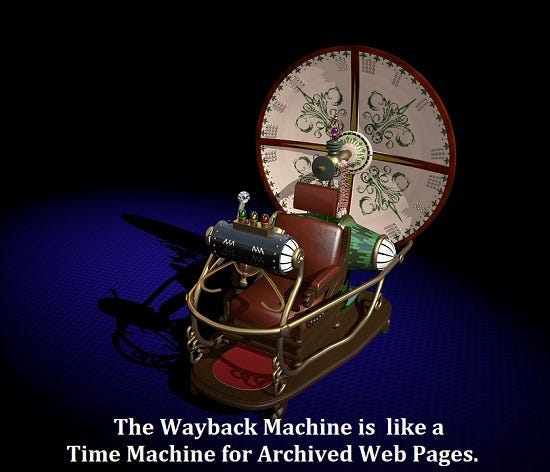A Comprehensive Guide to Backing Up Your Content with the Wayback Machine
Written on
Chapter 1: Introduction to the Wayback Machine
The Wayback Machine serves as an invaluable tool for navigating the internet's past. It's particularly useful for those new to content publishing.
I remember a time when I lost a significant amount of my work because my account on a particular platform was deleted, and I had no backups. Then, one day, I stumbled upon my lost content as if it had magically reappeared! That was the moment I discovered the Wayback Machine, an accidental yet fortuitous find.

A friend recently inquired about this tool, prompting me to reiterate my advice, as it's worth emphasizing. I believe these insights can significantly benefit others who share their work online.
Many individuals are savvy enough to back up their documents using various methods, such as hard drives, flash drives, or cloud services like Google Docs. However, few realize that the Internet Archive's Wayback Machine can also be employed to back up published content.
Utilizing the Wayback Machine for backups has two key benefits:
- It allows you to keep a snapshot of what your online content looked like on a specific date.
- If your work is ever copied or plagiarized, you possess an archived version that can serve as evidence.
I've learned these lessons through experience.
Section 1.1: How to Use the Wayback Machine
One crucial lesson is that if you know the URL of your content, you can quickly check for archived versions in the Wayback Machine. This part is relatively straightforward.
However, the challenging aspect is recognizing that the Wayback Machine does not always have archived copies. Although it crawls the web, it may not capture the site where your content was published. Even if it does crawl that site, it might miss the exact page containing your content. Therefore, if you don’t have a backup and there’s no archived version, you may find yourself in a difficult situation.
If you lack the URL, finding your content becomes even more complicated. I've attempted to search the Wayback Machine without knowing the URL, and all my attempts were unsuccessful. Here’s a helpful tip:
Save your URLs in the Wayback Machine as a simple backup.
To do this, visit the site’s homepage, where you’ll find a box labeled “Save Page Now.” Input your URL into that box and click “Save Page.” This service is free and operated by a non-profit organization, so I often make small donations via PayPal to support it. It’s truly worth it!
Section 1.2: My Personal Experience with the Wayback Machine
When I had content on two different sites, I learned they were about to shut down, giving me only a couple of weeks to retrieve my work. Instead of panicking, I turned to the Wayback Machine and saved all my posts. I created a folder to store the archived links as bookmarks for easy access.
When I eventually decided to republish my content, I simply accessed the archived links, made necessary edits, and reposted them. The Wayback Machine allowed me the flexibility to find a new home for my work without rushing. Some of my articles ended up on my blogs, while others were shared in online communities like Virily.
Have you ever utilized this powerful tool to create archived versions of your content?